
The TWS market is so saturated right now that every time we get another one at AzmoTech, I involuntarily roll my eyes. However, this time, I couldn’t. Especially intriguing is the fact that the latest offering from Nothing resembles an ultra-portable, transparent basin that also plays music. I’m referring to the new Nothing Ear (a), and I’ve been spending some time with it lately.
We received the yellow color option (it also comes in black and white), and I had to see if the earbuds sounded as ridiculous as they looked. Or, perhaps I’ll turn out to be completely wrong, and these are one heck of a transparent pair to recommend. I believe it’s time to explore these questions further in this comprehensive review of the Nothing Ear (a).
Unique Design But Too Plasticky

“Don’t judge a book by its cover,” they say. If the cover feels overly plasticky, it’s challenging not to judge. The Nothing Ear (a) gave me a similar initial impression. When I first held it, I appreciated its incredibly light weight at 39.6 grams, but its noticeably cheap build quality left me disappointed. Additionally, the case creaks a lot.
I applied pressure and firmly pressed on the charging cases of other TWS earbuds in a similar budget segment. They neither creaked as much nor felt like a toy in my hand. However, the Ear (a) did both, and to exacerbate matters, it isn’t as easy to open with one hand. Initially, it’s difficult to distinguish the opening side of the case from the hinge, leading to multiple accidental openings. Why, Nothing, why?
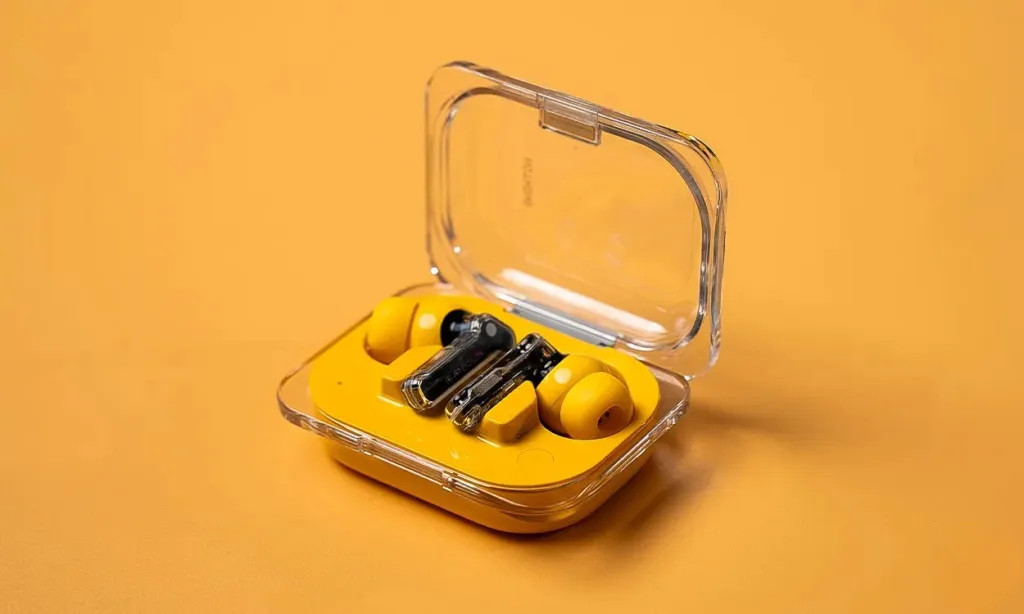
Putting aside the design and build quality of the case, the earbuds themselves aren’t bad at all. They do have a plasticky feel, but the exceptional fitting and airtight seal make up for it. The moment I put them on, I knew they wouldn’t fall off. Some serious headbanging confirmed this Feeling. I typically use the OnePlus Buds Z2, and the Ear (a) definitely fits better.

I also tried the Oppo Enco Air 3 Pro, and they felt slippery in my ears in comparison. However, when I tried the OnePlus Buds Pro 2R, I fell in love with the fit. It was undoubtedly the best of the lot. The Nothing Ear (a) comes in second in this regard.
You also get two additional ear tips in the box with the Ear (a) – one size smaller and the other size larger. However, this is pretty standard for most wireless earbuds, so nothing new there.
Additionally, the Ear (a) case features a dedicated reset button, a feature absent in the Enco Air 3 Pro. While I do understand that the transparent design theme is Nothing’s thing, it does highlight even minor scratches on the Ear (a). Our case did acquire some minor scuffs during the two weeks we’ve had it.

It’s All About That Bass – Maybe Too Much
It’s time to dive into the most crucial aspect: audio quality. I selected these five tracks to put these earbuds to the test:
1. “Bohemian Rhapsody” by Queen
2. “Ankhiyaan Gulaab” by Mitraz
3. “Paper Trail” by Darkside
4. “Blinding Lights” by The Weeknd
5. “Cornfield Chase” from Interstellar by Hans Zimmer

These tracks are not easy to reproduce and require the mids, lows, and highs to be distinct. Initially, straight out of the box, the Nothing Ear (a)’s sound quality didn’t impress me. All the tracks sounded flat, and I was disappointed. However, once I downloaded the Nothing X app, it miraculously fixed everything and made the Ear (a)’s 11mm drivers sound five times better.
However, a different issue arose. The bass was too heavy, and after using them for about 20 minutes, I developed a mild headache. If you prefer turning on the Bass Enhance functionality on these, you might be considered a bit extreme.
I had disabled every possible setting that could boost the bass, but that didn’t help much. Even in Balanced mode, the bass felt like it was pressing right against my eardrum. If you’re a bass enthusiast, though, this is undoubtedly the perfect choice for you.
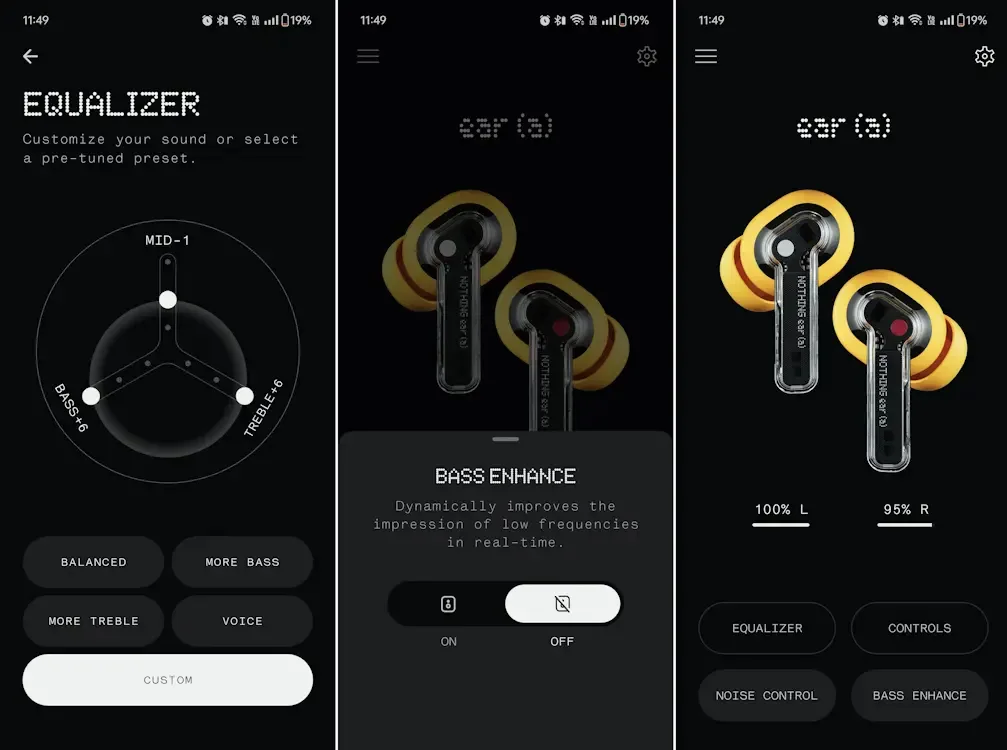
The good news is that, despite the heavy bass, it doesn’t overshadow the mids or treble significantly. As a result, you get solid output from these earbuds. Even the trebles are well-handled, and the highs are detailed. Overall, if you can overlook the excessive bass, the soundstage is pretty impressive. However, the Oppo does it all a bit better and maintains a more subtle approach to the bass.
Additionally, having an advanced EQ would have been nice, allowing for further tweaking. The EQ profiles are also quite basic, but the Custom profile does allow you to adjust the Mids, Treble, and Bass. So, there’s not much happening here either. You’ll find a lot more utility in Oppo and OnePlus’ earbuds with the HeyMelody app.
While the OPPO Enco Air 3 Pro doesn’t allow you to create a custom profile, it makes up for it in other ways. You get to experience OPPO Alive Audio, which adds a spatial effect to your audio, and I quite like it. Crucially, you also have access to the Golden Sound feature, offering a highly personalized listening experience. It works wonders!
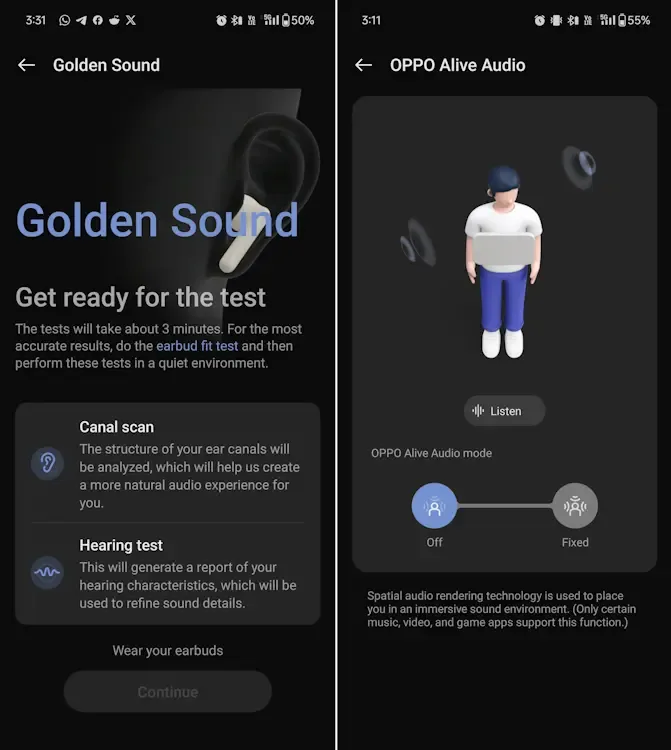
Moreover, the Nothing X app offers a dedicated widget for your home screen, allowing you to easily switch between ANC and transparency modes—a nifty little feature.
Additionally, LDAC support is included, which significantly improves audio quality. If you’re accustomed to AAC or LHDC-tuned earbuds, you’ll immediately notice the difference and find it refreshing.
Moving on to the ANC, I was pleasantly surprised by its performance. Despite Nothing Ear (a) claiming a 45dB ANC on paper, it actually outperformed earbuds boasting 50dB ANC. Even in heavy traffic, the combination of sound seal and ANC prevented honks and shouts from seeping through. The Transparency mode also functions quite well, with external noises coming through decently clear. It’s nothing extraordinary, but it gets the job done.
The OPPO Enco Air 3 Pro offers 49dB of ANC but falls slightly short of the Nothing Ear (a)’s ANC performance. Nevertheless, it remains one of the best ANC experiences available.

Now, let’s discuss the microphone quality. Even in noisy environments, no one I spoke to complained about my voice being inaudible or background noises dominating the conversation. However, in my experience, of all the earbuds I tested in this segment, the OnePlus Buds Pro 2R features the best mic setup. The Ear (a) comes in second, followed by the Enco.
The touch gestures are also smooth and usually work without needing a second attempt. Additionally, you can customize the triple pinch, double pinch, pinch and hold, as well as double pinch and hold gestures using the Nothing X app. Having volume control is a relief, something I miss on my Buds Z2.

Good Connectivity Options, But…..
Regarding the connectivity options of the Nothing Ear (a), it supports Bluetooth 5.3, similar to other earbuds in its segment. However, its noticeable 120ms latency can be a drawback. In comparison, the Enco Air 3 Pro’s 47ms latency proves to be much more versatile.
While gaming, I experienced noticeable lag, which interfered with hearing footsteps accurately. However, the range is exceptional—I could move to the other end of our large office without experiencing any sound stuttering, a feat my Buds Z2s can’t match.
Furthermore, the Ear (a) features in-ear detection, a common feature in earbuds nowadays. It also supports Dual Connection, allowing you to connect the earbuds to two devices simultaneously, another common feature in this segment. Additionally, it offers Swift Pair, which can be useful if you have a Windows PC.
Nothing’s Earbuds are Kinda Juiced!
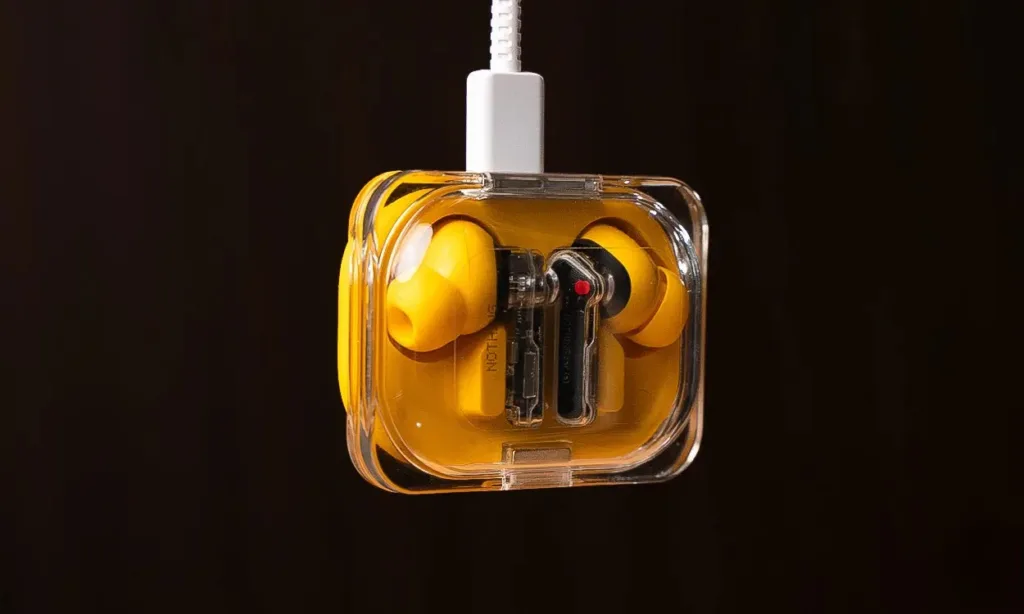
The charging case’s 500mAh battery capacity is on the higher end of the spectrum. The earbuds’ 46mAh battery unit is also decent, on paper. In real-life usage, these numbers translate well, providing over a day of backup on a single charge—specifically, 35 hours with ANC off.
On their own, the Nothing Ear (a) earbuds can deliver around 5 hours of backup, which is commendable. In comparison, my Buds Z2s give me around 3.5 hours of backup. These numbers are all with ANC turned off. With ANC on, the Nothing Ear (a) will provide around 4 hours of backup without the case and roughly 22 hours with it.
In terms of sheer battery backup, the Ear (a) outperforms the competition. The only other earbud that offers similar backup is the OnePlus Buds Pro 2R. Even the Enco Air 3 Pro isn’t too far behind, providing just 30-45 minutes less backup.
Regarding charging, just 10 minutes of charging gave me around 7-8 hours of backup with the case. So, if you lead a fast-paced life, it will have you covered on that front. The Oppo Enco Air 3 Pro also provides around 5.5-6 hours of backup with the same amount of charge.
Nothing Ear (a): Should You Buy It?
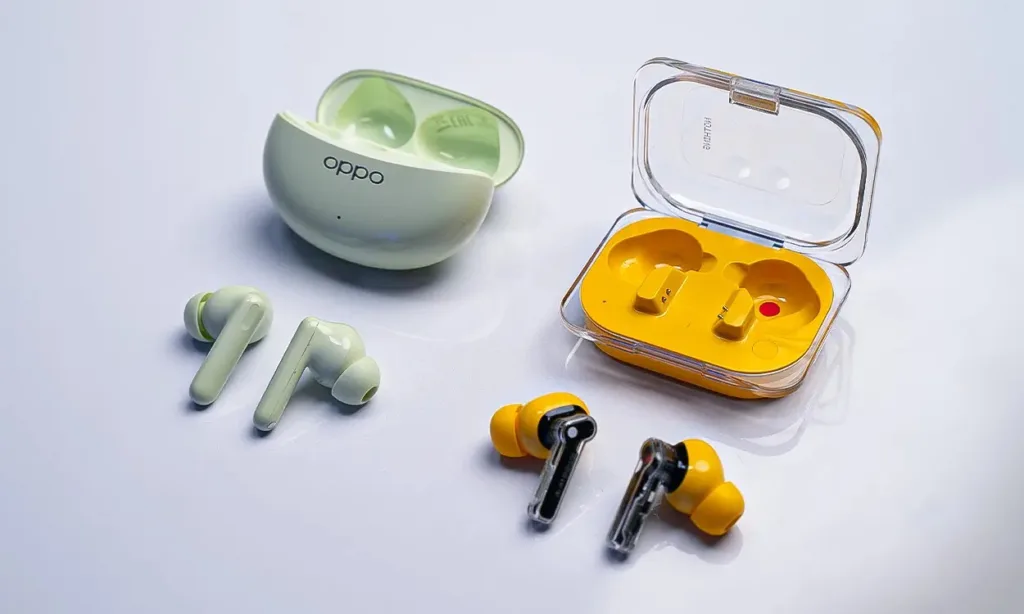
Priced at Rs. 7,999 in India, the Nothing Ear (a) offers a lot to consider. In my honest opinion, I would lean towards the Oppo Enco Air 3 Pro, which typically retails for Rs. 4,499 in India, and can often be found at an even lower price with discounts and offers.
For Rs. 3,000 less, you don’t sacrifice much, aside from the additional battery life and transparent design. However, what you gain with the Enco Air 3 Pro is a balanced audio signature, which I find appealing and prioritize. Therefore, if sound quality is a priority, the Enco Air 3 Pro should be your choice.
However, if you prefer more bass, longer battery life, better microphone quality, and slightly better ANC, the Nothing Ear (a) might be worth considering. To me, they feel a bit overpriced for the average Indian consumer. If they had been priced around Rs. 6,000 or 6,500, they would have been a value-for-money package I’d recommend without hesitation. For almost half the price, you can get the Enco Air 3 Pro, which seems like a better choice to me.
The Nothing Ear (a) will be available for purchase in India starting April 22, 2024, via Flipkart, Croma, and Vijay Sales.
Pros and Cons
The Pros
- Commendable battery backup
- Pretty good ANC
- Amazing microphone quality
- Provides great fit
The Cons
- Build quality feels cheap
- Audio output is too bass-heavy
- Slightly overpriced
- 120ms Latency
Final Verdict
Design and Build Quality
Sound Quality
Microphone Quality
ANC
Battery Backup and Charging
Connectivity
At Rs. 7,999, the Nothing Ear (a) seems overpriced. While they offer commendable battery life, an excellent fit, substantial bass (for bass enthusiasts), and one of the best ANC experiences in this segment, the OPPO Air 3 Pro offers similar features for much less. The OPPO Air 3 Pro doesn’t compromise on major features, making it difficult to recommend the Ear (a) instead.

0 Comments